Like most photographers, I love wide aperture (“fast”) lenses for their ability to turn a distracting background into a beautifully out-of-focus blob. But that shallow focus can also make it hard to keep the subject sharp. If you’re within ten feet, an inch or two could mean the difference between focus being on the eyes or on the nose (with the eyes out of focus). And, if the subjects are moving, of course it’s even more challenging. Eye autofocus has changed that, and this past weekend I had not one, but two great opportunities to prove that.
On Saturday afternoon, friends visited with their 16-month-old son. Then a few hours later, we attended a two-year-old’s birthday party (yay COVD vaccines!). Kids can be tough to photograph for many reasons, but the most challenging might be keeping them in focus. Even at rest, they rarely sit still. So I decided to tackle the problem with my Nikon Z 6 II’s new face/eye autofocus settings and the 50mm f/1.8 and 24-70mm f/2.8 Z lenses. And, I chose to shoot both lenses wide open, to challenge the AF system even more. In the past those situations, with those lenses, would have likely meant an in-focus rate of about 50-70%. This time, though, the in-focus rate was over 90%. And that will likely change how I use autofocus.
I’ve been a fan of “back-button focus” for about two decades now. I like that it lets me separate the act of focusing from that of taking pictures. Using that button with my thumb lets me choose when autofocus happens, and my index finger controls when I take the picture. However, with more and more cameras these days sporting a small joystick on the back to let you move the focus point easily, I’m thinking it might be time for a change. That’s because my thumb can only do one thing – either activate focus or move the focus area (with the joystick). So for this test of fast lenses and kids, I switched autofocus activation from that back button to the shutter button. Doing this freed my thumb to stay on the joystick, and shift the autofocus area to stay on my subject’s face. And that’s what allowed this new autofocus option on the Nikon Z 6 II to really shine.
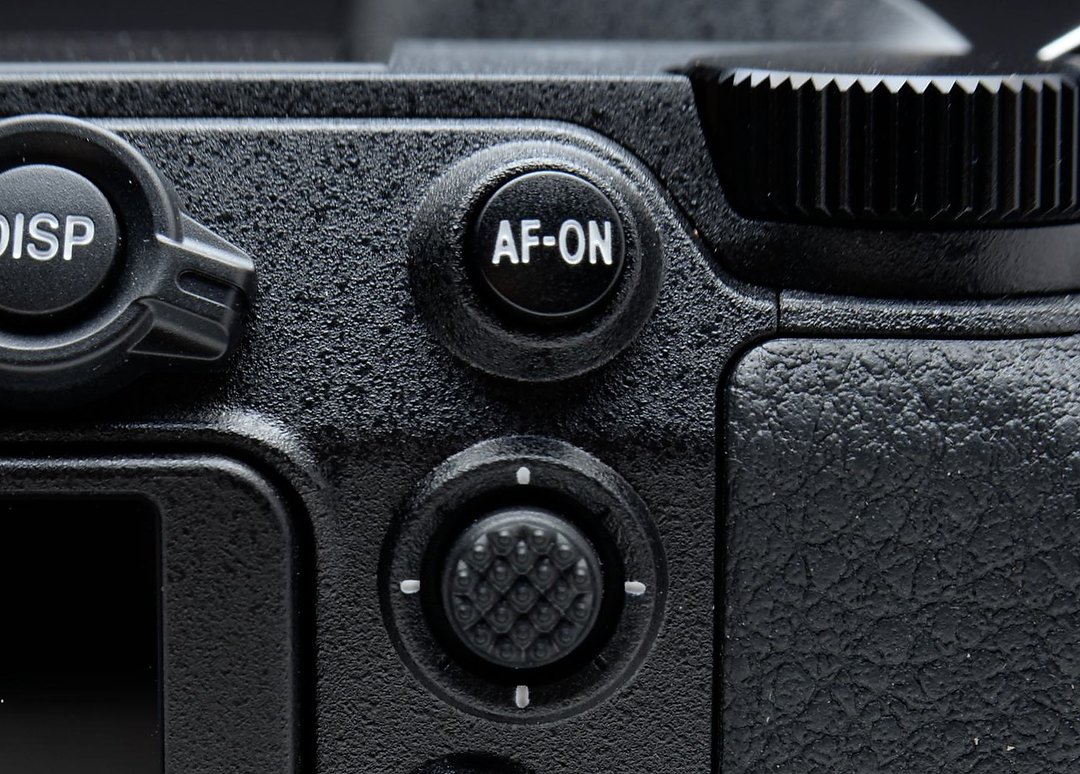
Here’s the AF-ON button that I use for back-button focus, and below it the joystick I can use to move the focus area around in the viewfinder.
Face detection, and then eye autofocus, is nothing new. It’s been around in different cameras from many manufacturers for a number of years. Not surprisingly, over that time, it’s gotten better and better. But if there are multiple people in the frame, how does it know which one is most important to you, which face, or eye, it should focus on? And that’s, to me, the most important feature that Nikon added when they released the Z 6 II and Z 7 II. Choosing “Wide-area AF (L-people)” for the AF Area Mode (and I’m using AF-C for continuous tracking), you get a small rectangle in the viewfinder which is the ONLY place the camera is looking for faces/eyes.
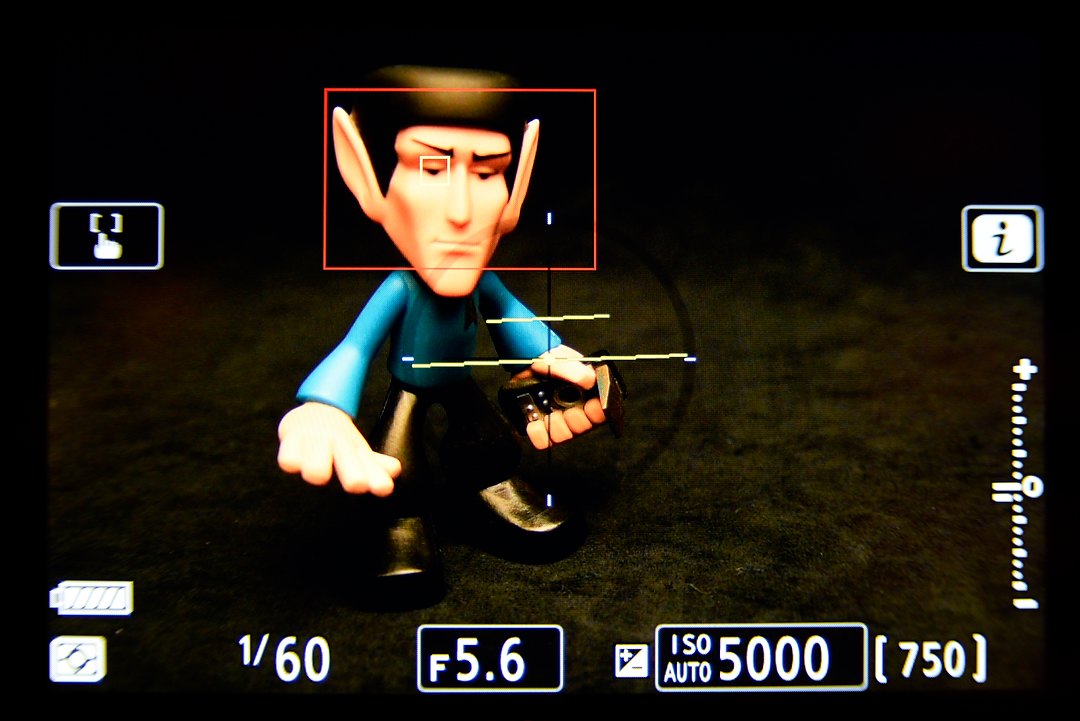
Here you can see the rectangle that I can shift to tell the camera where to look for a face or eyes. And even with this small plastic figure, the camera “sees” the eye and puts the focus there (and indicates that with the yellow box).
That small rectangle accomplishes two wonderful things: one, it lets the camera put all of its autofocus processing power to work on one smaller area, instead of the entire viewfinder, which results in faster and more accurate autofocus. And two, it lets you, the user, decide WHERE you want it to look for faces/eyes. No more face/eye AF grabbing the wrong person. I had played with this a bit at home when the cameras first came out, but had yet to have a good real-world test of its performance. This past weekend I did.

Reuben showed off his stair-climbing chops, and played a bit of peek-a-boo through the railings. The system locked onto his eye and tracked as he moved back and forth. Nikon Z 6 II, Aperture Priority, Natural auto white balance, ISO 2500, 1/200 at f/1.8 in Matrix metering, 0.0 EV, Nikkor Z 50mm f/1.8 S lens at 50mm.
And there was another big benefit to this new feature as well. In the past, when photographing people, I’d normally use a single AF point and work hard to keep it on the subject’s near eye. That could result in framing that wasn’t what I really wanted, as I had to frame based on where the AF point was. Now, this rectangle frees me to be confident my subject’s eye(s) will be sharp while giving me great latitude to shift the framing as I concentrate on composition.
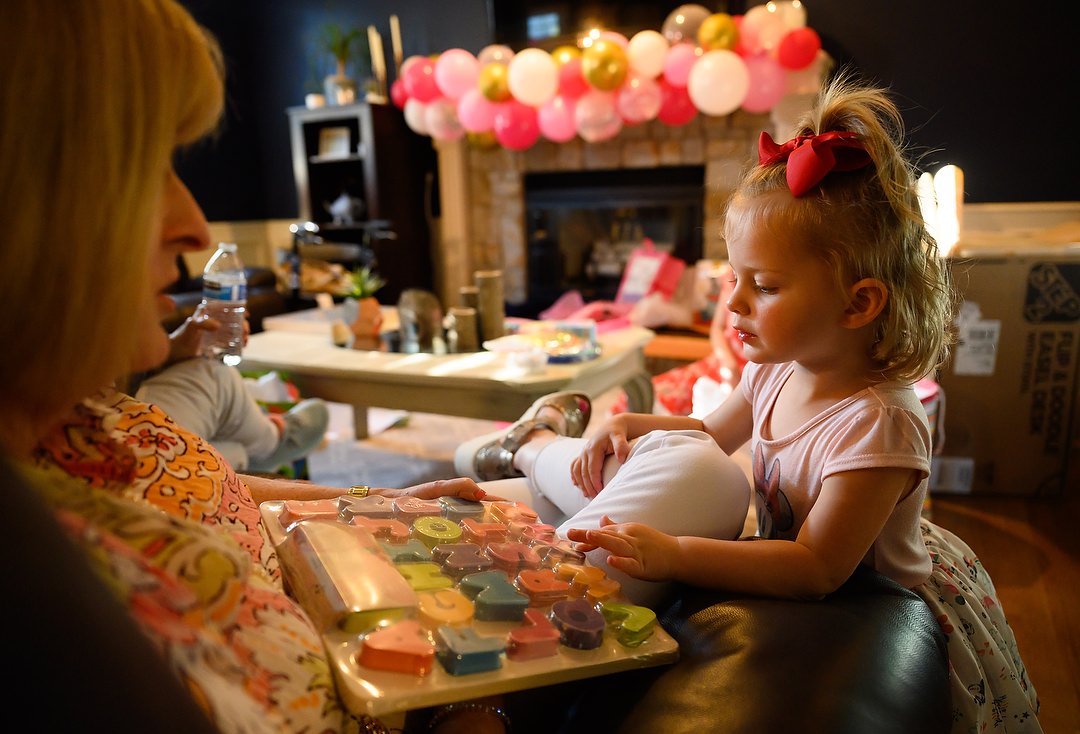
Josie inspects one of her birthday presents with grandma. Again, I’m free to compose the image in camera the way I want, as long as I shift the rectangle to put the AF system’s attention where I need it. Nikon Z 6 II, Aperture Priority, Natural auto white balance, ISO 2000, 1/200 at f/2.8 in Matrix metering, -1.0 EV, Nikkor Z 24-70mm f/2.8 S lens at 24mm.
As you can tell, I’m impressed. And was once again reminded how important it is to really read the user manual for a new camera and look for what’s changed and how to take advantage of those changes. For me, that means I’ll reconsider how I’ve used autofocus for the last two decades. After all, what’s the point of buying a new camera with all the bells and whistles if you don’t learn how to use them? Cameras change, features change, and photographers should change too.
(If you like this story, please share it with your friends and let them know about the links on photography that I post on my business Facebook page. I’m also on Instagram and Twitter, @reedhoffmann. And if you’re curious about the workshops I teach, you can find them here. And, you can subscribe to this blog on my home page.)
Here are a few more photos from that day, with information about how they were made:
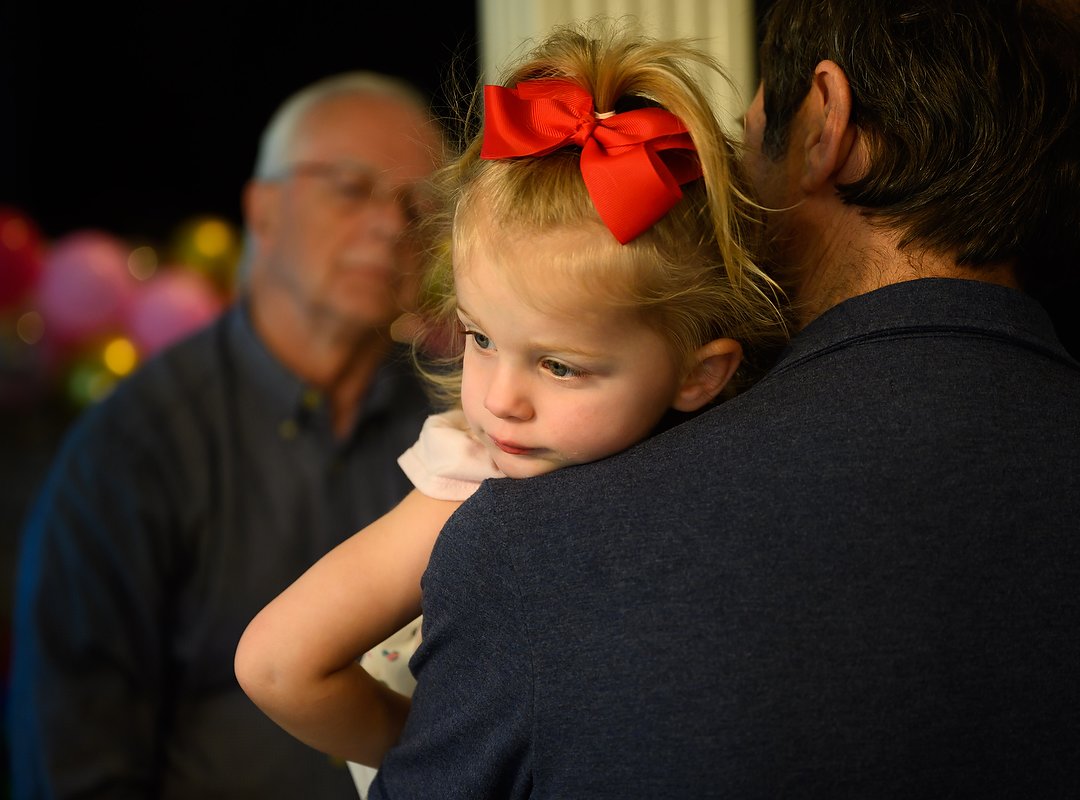
Josie with her two granddads. Keeping the AF rectangle on her head made sure the AF system would stay on her, and her near eye. Nikon Z 6 II, Aperture Priority, Natural auto white balance, ISO 1250, 1/200 at f/2.8 in Matrix metering, -0.3 EV, Nikkor Z 24-70mm f/2.8 S lens at 70mm.
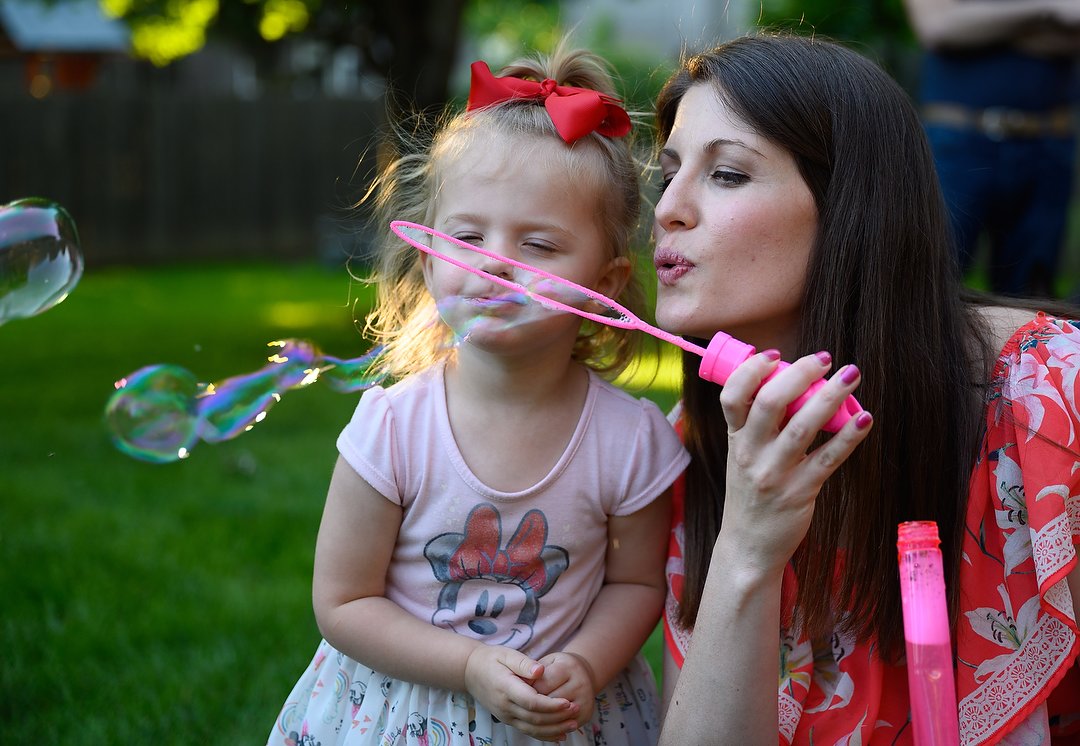
Shifting the AF rectangle to Josie’s mom, the camera kept focus on mom’s eye as they blew bubbles. Nikon Z 6 II, Aperture Priority, Natural auto white balance, ISO 320, 1/320 at f/2.8 in mMatrix metering, -0.7 EV, Nikkor Z 24-70mm f/2.8 S lens at 56mm.
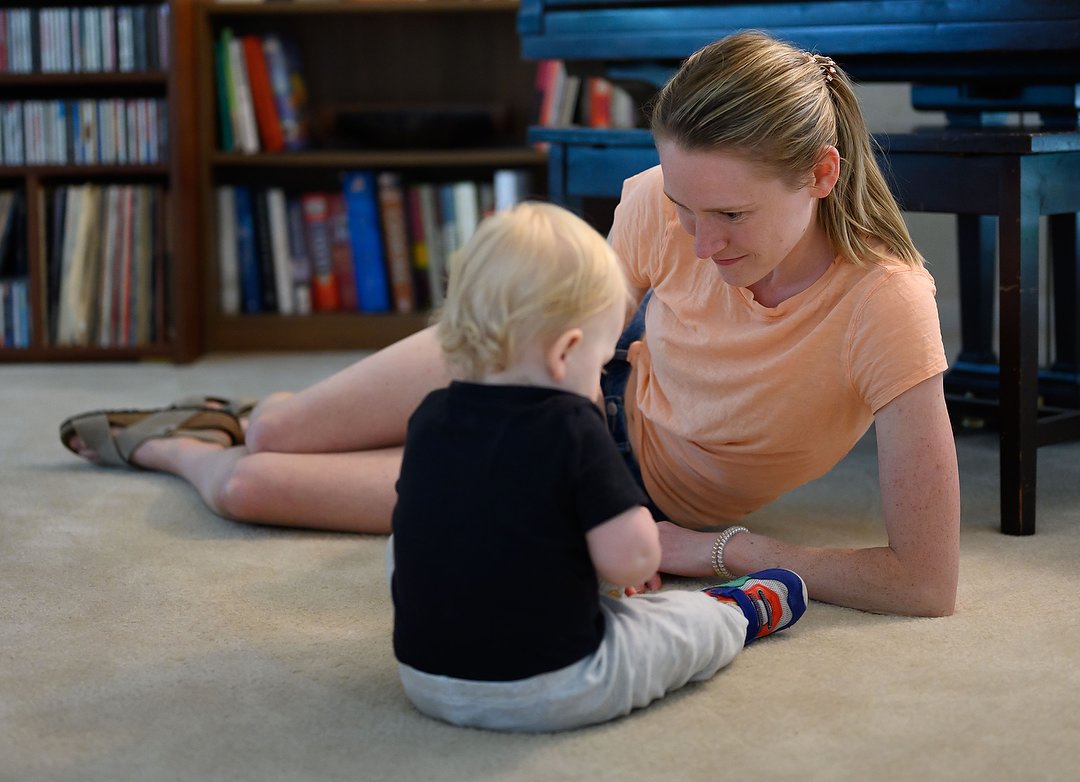
Being able to move the rectangle in the viewfinder, and thus control where the camera looks for faces/eyes, I can concentrate on composition. In this case I shifted it over to Reuben’s mom. Nikon Z 6 II, Aperture Priority, Natural auto white balance, ISO 1800, 1/200 at f/1.8 in Matrix metering, -0.3 EV, Nikkor Z 50mm f/1.8 S lens.
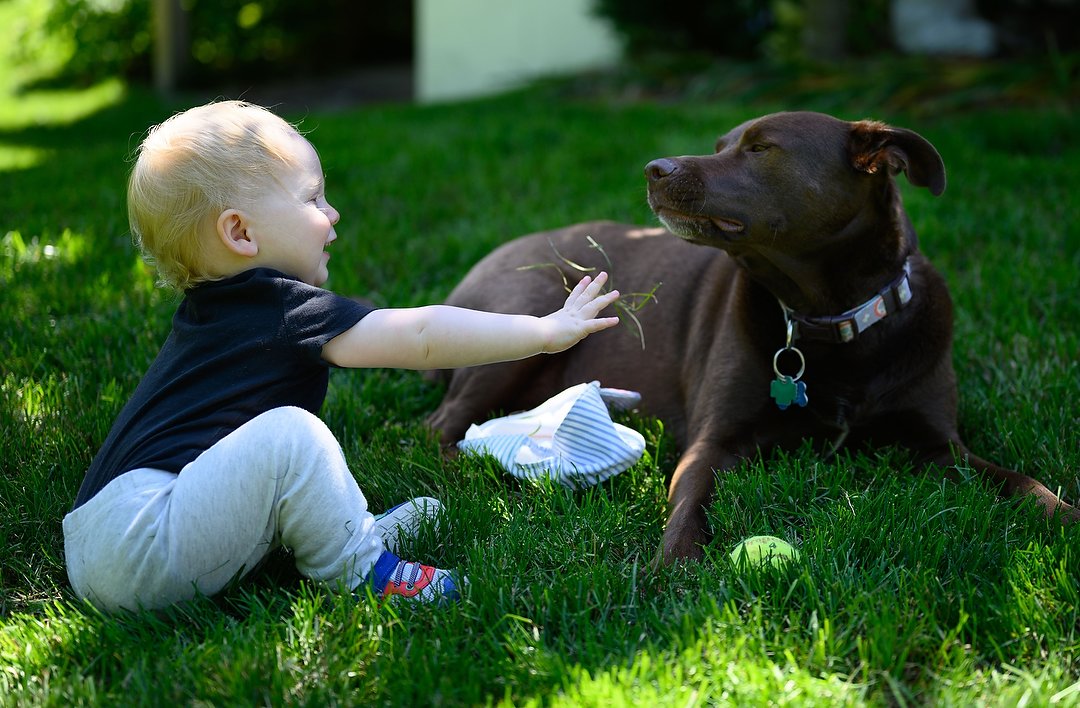
The camera has an option for wildlife as well, but between having it set for people and keeping the rectangle on Reuben, I could be confident it would stay on him and not shift to our dog, Finney. Nikon Z 6 II, Aperture Priority, Natural auto white balance, ISO 160, 1/1250 at f/1.8 in Matrix metering, -0.3 EV, Nikkor NIKOR Z 50mm f/1.8 S lens.

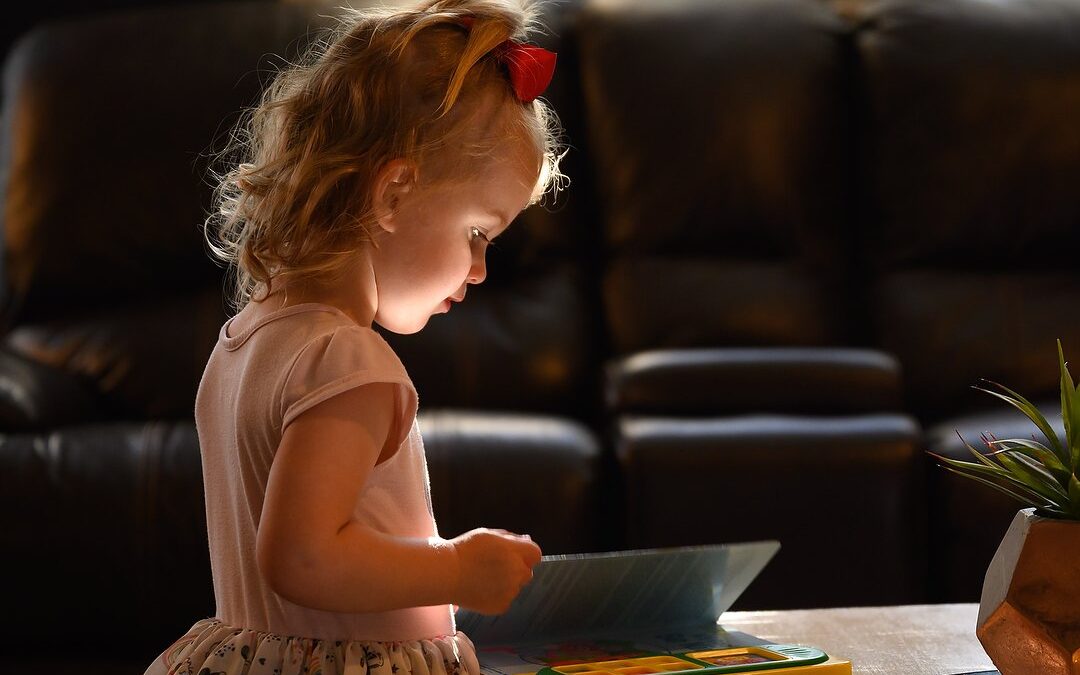
Hopefully getting a Z7II in a week or two. I guess I’ll need to read the manual (sigh).
Congrats! And yes 🙂
Thanks Reed. Great tips & of course terrific photos. Interesting to learn your take on the joystick-it is very handy & works well with AF moved to the shutter button.